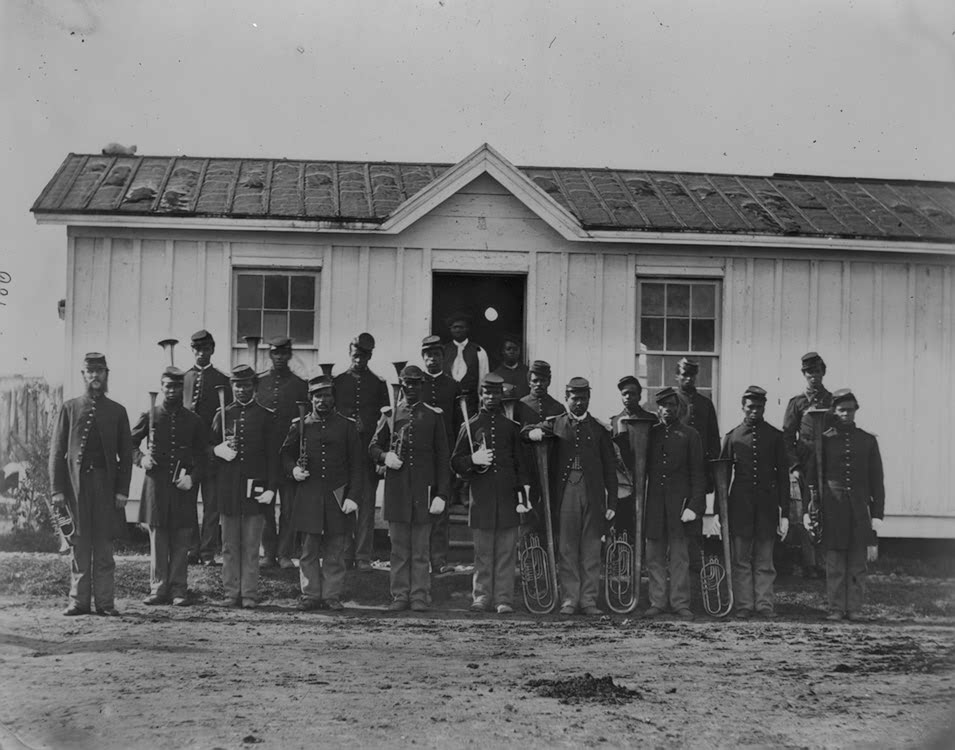
Ever since the official end of the American Civil War in 1865, writers have attempted, some successfully, to portray the role of black troops in the Union Army. The Negro in the American Rebellion, by William Wells Brown,(1867), A History of Negro Troops in the War of the Rebellion, by George Washington Williams, (1888), and The Black Phalanx, by Joseph T. Williams,(1888), are but three of the earlier works which adequately set forth black participation in the Civil War by writers who were actually there. Of more recent vintage are The Sable Arm, by Dudley Taylor Cornish,(1956) and Forged in Battle, by Joseph T. Glatthaar,(1990), and Like Men of War, by Noah Andre Trudeau, (2002.
These works and many more on the subject of black soldiers very clearly show the depth of investigation into the particular subject matter. But the study of individual participation, with the exception of heroes, has also clearly been lacking.
Geographically, Camden County, New Jersey in 1860 was much like it is today. The City of Camden lay across the Delaware River from Philadelphia but with access by boat or ferry only; the surrounding areas were mostly farmlands. The county’s progress in industry and urban development took great strides decades after 1860 due in part to the coming of the railroad as well as to the founding of Campbell Soups and R.C.A. in Camden City, and to the development and expansion of diverse industries. Black and white communities existed side by side in the county for more than one hundred years.
The borough of Lawnside, known earlier as Freehaven or Snow Hill was a primarily black community located adjacent to Haddonfield and less than ten miles from the City of Camden. The City of Camden itself had areas such as Stockton, Kaighnville, Fettersville, where black residents lived and worked.
A sense of what Camden County community life might have been like during the Civil War can be gleaned from reading Prowell’s history but mostly as it pertains to white community life. A much better barometer to use to understand the time are the two local newspapers which served the county, the Camden Democrat and the West Jersey Press. The Democrat was known as a “Copperhead” newspaper, having a pro-Southern slant. The word “Copperhead”, was defined as a person or group in the Northern states who sympathized with the South.
Although clearly against the Lincoln Administration and its management of the War, the Democrat was also vigorously against the abolition movement and the Negro in general printing anti-black rhetoric on a frequent basis. Every opportunity to attack the abolitionists in print was liberally taken in bold headlines.
For example, the November 1, 1862 edition concerned the Administration’s appeal for support of the Emancipation Proclamation which would be issued after the first of the new year. In large, bold black print, three times larger than standard print under the headline, “Negro Influx”, the Democrat stated:
“Mr. Frelighuysen, the Attorney General, in speeches at Woodbury and Bridgeton, appealed to farmers to support the Proclamation and the War, solely because they would result in freeing hundreds of thousands of slaves, who would flock to the North and work for almost nothing…. How do laboring men like the prospect of the competition, and working cheek by jowl with the negro? Still it is the very degradation of white labor for which the Abolitionists have been so long contending!”
The Democrat frequently printed articles for its readers in an apparent effort to degrade the local black population. Articles such as the following could be found in many editions in 1863: ‘Tarred and Feathered”, We learn by the Bergen Co. Democrat, that the people of Acquackanonk feeling themselves scandalized by the fact that a free American of ‘African scent’ and a white woman were living together in that place as man and wife, tarred and feathered the negro and compelled the ‘happy pair’ to depart.”
In direct contrast to the Democrat, the West Jersey Press took a pro-Union stance but with a liberal, non-sensational approach supporting the Administration. Contending with the anti-War antagonism of the New Jersey legislature, the Press took every opportunity to upgrade and support black efforts for equality. In addition to reporting on the gallantry of black soldiers in battle, the Press also reported on black visitors to the county such as this article in the August12,1863 edition:
“Our city was visited yesterday by a large number of Americans of African descent on an excursion from Wilmington. They were well disposed and conducted themselves in an orderly manner so far as our observation extended.”
When President Lincoln’s call to arms came to Camden County in 1861, both the black and white communities responded; only white recruits were accepted. Government Army recruiters and patriotic citizens of the county held meetings in the public halls of Camden City calling for enlistments and offering bounties to sign up. At such a meeting in the county courthouse held on April 18, 1861, military units with names such as the Washington Grays, Stockton Cadets, Camden Zouaves and Union Guards marched in uniform to the cheers of the crowds. Men were signing up by the hundreds, but when the blue uniforms were issued, only white recruits were allowed to receive them and the black men were told to go home with the expression, in principle, “This is a white man’s war.”‘
Sentiment changed however, and the black soldier became a reality but not without many hardships along the way. Camden County’s black community was a microcosm of hundreds of other black communities throughout the north whose men wished to go to war.